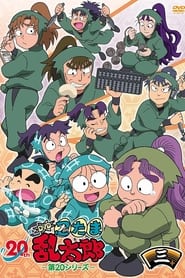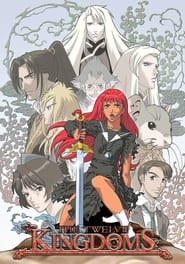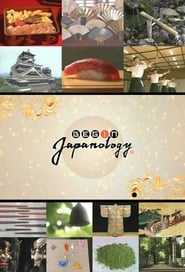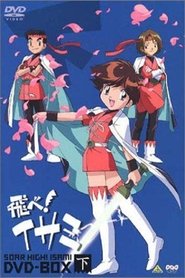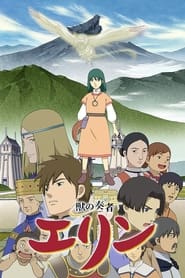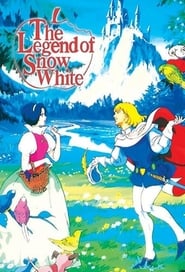Nhk Bs1 TV Series
-
Ninja Boy Rantaro
1993
star 6.2Rantarō, Shinbei and Kirimaru are ninja apprentices in the Ninja Gakuen, where first grade ones are called "Nintamas". They must learn everything a ninja must know, but as for our heroes, money, food or playing are more interesting. The series show the everyday adventures of our heroes. -
Churasan
2001
star 9.7The 64th NHK Asadora Renzoku Drama is Churasan, a story of a young woman, Kohagura Eri, who was born in Kohamajima Island, Okinawa on May 15, 1972, the day when Okinawa was returned to Japan from the U.S. Eleven years later, Kamimura Shizuko and her two sons, Kazuya and Fumiya, from Tokyo come to stay as the guests of a small inn run by Eri’s family. Eri’s fun-loving, yet eccentric family welcomes them warmly. However, Eri is shocked to hear one of the sons, Kazuya is terminally ill and Shizuko and her sons came to Okinawa to spend his last moment together in beautiful nature. Fumiya, Kazuya’s younger brother, and Eri promise to marry each other someday. However after Kazuya’s death, Fumiya and his mother leave the island to go back to Tokyo. Years later, they are reunited, Eri as a nurse and Fumiya, a doctor, working at the same hospital in Tokyo. -
Teruteru Kazoku
2003
Teruteru Kazoku
2003
The 69th NHK Asadora Drama, based on Rei Nakanishi's novel, is about the Iwata family living in Ikeda, Osaka City between 1950s and 1960s. The story is told through the eyes of the youngest daughter, Fuyuko. The family runs a bakery. The mother, Teruko, is a very energetic woman who is determined to make her dreams come true. Responding to Teruko's expectations, the eldest daughter becomes a figure skater and the second daughter becomes a very famous professional singer. In contrast, Fuyuko finds her joy in bread making. -
Major
2004
star 8.5Honda Goro the son of a famous baseball player loves nothing more than baseball itself. His biggest dream is to show his father that he can become the best pitcher in the world despite all the hardships he had to endure he keeps on running towards his goal at full speed. -
Jun to Ai
2012
Jun to Ai
2012
Jun to Ai is a Japanese television drama series. It debuted on October 1, 2012 and was broadcast until March 30, 2013. It is about a girl named Jun Kanō, raised in Miyakojima, Okinawa, who moves to Osaka to work in a hotel. There she meets a man named Itoshi Machida, with whom she falls in love. It is the 87th NHK Asadora. -
Azuki-chan
1995
star 8.2Azusa Noyama is a 12-year-old girl student, taking 5th grade, but everyone knows her as Azuki-Chan, nickname that she dislikes. Yuunosuke Ogasawara, a new student, asks her about her nickname, saying that he likes it. Azuki falls in love with him, and they start going out together. They share a diary, and become boyfriend and girlfriend. -
The Twelve Kingdoms
2002
star 8Nakajima Youko is your average somewhat timid high school student. One day, a strange man named Keiki appears before her, swearing allegiance. Before she could properly register what was happening, demon-like creatures attack Youko and her friends, after which they are pulled into a different world. A world unlike what she has ever known. Separated from Keiki, Youko and her friends must do whatever they can if they wish to survive in this new world. -
Hey! Bumboo
1985
star 5.8Bumboo is a talking car, innocent in many ways, Bumboo searches for her mother throughout many adventures and dangers, battling villains and stopping thieves while discovering that she may not be the only talking car of her kind in the world. -
Mrs. Pepper Pot
1983
star 8Mrs. Pepper Pot lives in a small village with her husband, and enjoys a unique life because she has a small magic spoon that helps her reduce her size, and during that, Mrs. Pepper Pot embarks on a series of adventures during which she communicates with animals easily. -
Rin-ne
2015
star 7.6As a child Sakura Mamiya mysteriously disappeared in the woods behind her grandma's home. She returned whole and healthy, but since then she has had the power to see ghosts. Now a teenager, she just wishes the ghosts would leave her alone! At school, the desk next to Sakura's has been empty since the start of the school year, then one day her always-absent classmate shows up, and he's far more than what he seems! -
Begin Japanology
2008
star 8BEGIN Japanology invites you into the world of Japanese culture, both traditional and modern, explaining how traditions evolved and the part they still play today in people's everyday lives. -
Soar High! Isami
1995
star 8Soar High! Isami is an anime series made by Group TAC and directed by Gisaburô Sugii. The anime is based on The Hakkenden but is set in the future. The anime was broadcast on NHK between April 8, 1995 and March 30, 1996. It is licensed by Hirameki International in the USA. -
Atsuhime
2008
star 9The 47th NHK Taiga Drama is a life story of Princess Atsu, who was born in Kagoshima Prefecture, then called Satsuma, and became the wife of Tokugawa Iesada, the 13th shogun of the Tokugawa shogunate. She accedes to the highest rank in Ooku, the inner palace of the Edo castle where women related to the reigning shogun resided. Iesada dies soon after their marriage and Atsuhime assumes the name Tenshoin at the age of 23. She exerts herself for the Tokugawa clan and for the nation during the upheaval in the Meiji Restoration, headed by those from Satsuma. -
The Beast Player Erin
2009
star 7.3In the war against neighboring countries, the Grand Duke’s warriors use dragon-like beasts called Touda as weapons. Touda are admired across the nation and villages take great pride in breeding them. Erin lives in one such village with her mother, Soyon, who is the best beastinarian in the country. However, life in the village is not so straightforward: Soyon is also an Ariyo, a woman of the Mist People - a race that is feared by humans for its mystical abilities. So that she and Erin can stay in the village, Soyon must flawlessly fulfill her duty capturing and disciplining the Touda; but while Erin wants nothing more than to become a beastinarian, she also feels sorry for the Touda and recognizes that there’s far more to them than meets the eye. Can Erin ever become an ordinary beastinarian when her deepest instincts tell her there is a better way to interact with the Touda? -
Master Keaton
1998
star 7.2The amazing Taichi Keaton works on cases around the globe that always lead to adventure! He combines his arsenal of multidisciplinary expertise in investigation, archeology, and survival with his experience as a professor, a Falklands Conflict veteran and a SAS agent to unravel the often dangerous challenges in each riveting episode. -
Today's Close-Up
1993
Today's Close-Up
1993
A current affairs television programme produced by the Japanese public broadcaster NHK provides cutting-edge information and critical analysis on important issues confronting Japanese lives. -
Pingu in the City
2017
star 7.6Pingu and his family move from their small village to the big city; in which there are many people with many different occupations. The ever-curious Pingu tries to join them at their jobs, but his mischievous side gets the better of him and he ends up messing things up. -
Montana Jones
1994
star 8.3The series takes place in the 1930s and is about the adventures of Montana Jones, who goes treasure hunting with his cousin Alfred Jones and the beautiful reporter Melissa Thorn. They visit real locations and cities like the Pyramids of Giza, the Taj Mahal, Istanbul or Easter Island. Frequently they cross paths with Lord Zero - a rich, eccentric art lover and master thief. -
Onegai! Samia-don
1985
star 6.5Please! Psammea-don is a Japanese anime that was broadcast from 2 April 1985 to 4 February 1986 with a total of 78 episodes produced. This anime is based on the 1902 novel Five Children and It by English author Edith Nesbit. The anime differs from the novel in revolving around four children rather than five. Three of the children are siblings while the fourth is their friend and neighbor. The four children encounter the Psammead who, in the anime, is depicted as being yellow with a blue hat, and more of a grumpy and lazy being than mischievous. In Latin America, the series was known as Samed, el duende mágico and in France and Quebec as Sablotin. In the Arab world, it was known as Moghamarat Samid. -
The Legend of Snow White
1994
star 9.7The Legend of Snow White is a Japanese anime series produced by Tatsunoko Production and based on the European fairy tale. Directed by Tsuneo Ninomiya and using a screenplay written by Jinzō Toriumi, the series premiered on NHK on April 6, 1994 and ran for 52-episodes until its conclusion on March 29, 1995. The series uses two pieces of theme music: one opening theme, "Heart no mori e tsuretette" by Miki Sakai with Red Dolphins, and one ending theme, "Folk Dance" by Mebae Miyahara.
